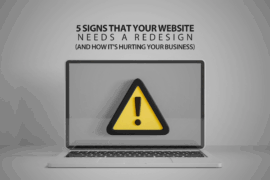Marketing is an essential component of any business, and it’s especially important for small business owners. A well-crafted marketing plan can help you reach your business goals, attract new customers, and increase your revenue. In this blog post, we’ll guide you through the steps of creating an engaging marketing plan for your small business; that will not only boost your sales but also put your name on the world map.
Define your target audience
Choosing your target market is the first stage in developing a marketing strategy. Who are the people most likely to be drawn to your goods or services? Consider factors such as age, gender, location, income, interests, and values. Once you have a clear understanding of your target audience, you can tailor your marketing efforts to appeal to them.
Related: Technological trends that will shape 2024
Determine your unique selling proposition (USP)
Your unique selling proposition is what sets your business apart from your competitors. It’s the reason why customers should choose your products or services over others. Your USP could be your exceptional customer service, your high-quality products, or your affordable prices. Identify your USP and make sure to highlight it in all your marketing efforts.
Choose your marketing channels
Social media, email marketing, search engine optimization (SEO), pay-per-click (PPC) advertising, and content marketing are just a few of the numerous possible marketing platforms. Select the channels that will help you reach your target audience the most effectively while staying within your budget.
Set your marketing goals
Your marketing goals should be specific, measurable, achievable, relevant, and time-bound (SMART). For example, your goal could be to increase website traffic by 20% in the next six months or to generate 50 new leads per month. Setting SMART goals will help you track your progress and adjust your marketing plan as needed.
Create your marketing budget
Your marketing budget will depend on your business’s size, industry, and goals. Allocate your budget to the marketing channels that are most effective for reaching your target audience and achieving your marketing goals. Don’t forget to track your expenses and adjust your budget as needed.
Develop your marketing tactics
Your marketing tactics are the specific actions you’ll take to reach your marketing goals. For example, if your goal is to increase website traffic, your tactics could include improving your website’s SEO, creating valuable content, and running PPC ads. Make sure your tactics align with your budget, target audience, and marketing goals.
Measure and analyze your results
Finally, measure and analyze your marketing results regularly. Use tools such as Google Analytics and social media insights to track your website traffic, engagement, and conversions. Analyze your results to identify what’s working and what’s not, and adjust your marketing plan as needed.
Conclusion
A marketing plan is essential for any small business looking to grow and attract new customers. By defining your target audience, determining your unique selling proposition, choosing your marketing channels, setting your marketing goals, creating your marketing budget, developing your marketing tactics, and measuring and analyzing your results, you can create an effective marketing plan that drives your business’s success. Remember to regularly review and adjust your plan to ensure it continues to meet your business’s changing needs.









